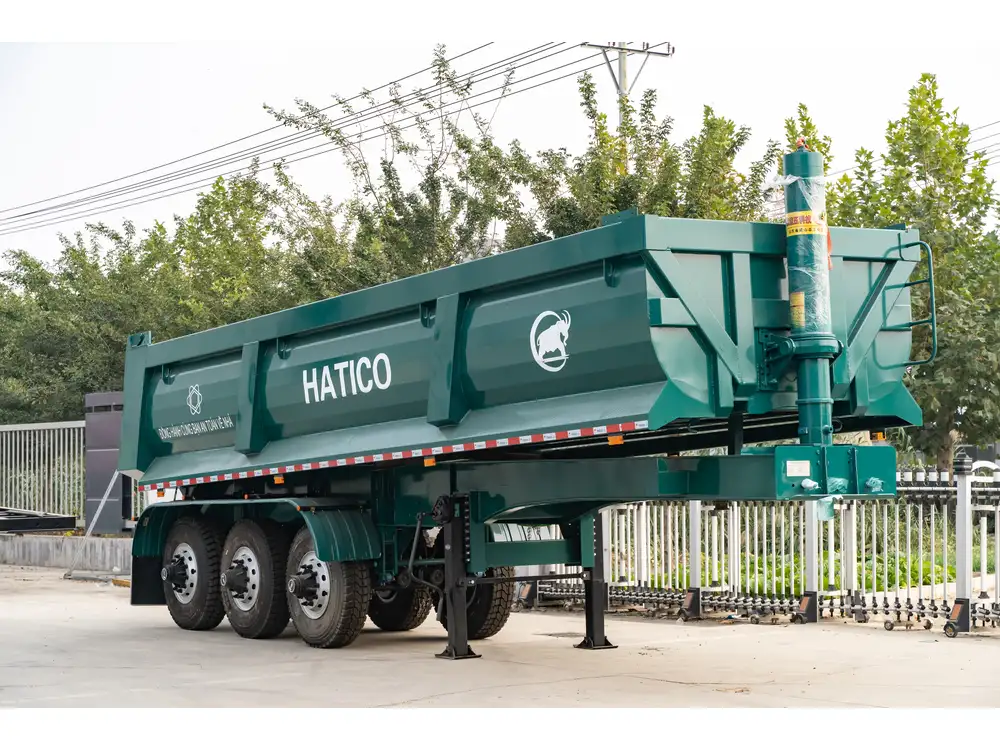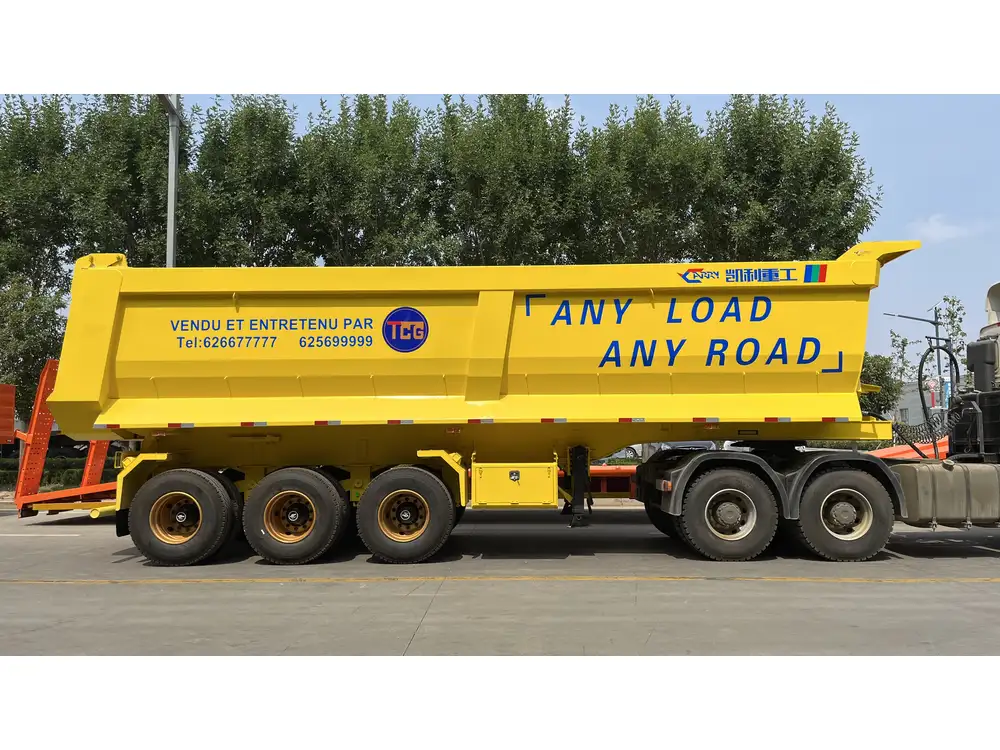Understanding the capacity of a semi tanker trailer is crucial for businesses in the logistics and transportation sectors. These vehicles are ubiquitous in the movement of liquids, encompassing everything from fuel to food-grade products. In this article, we will delve deeply into the concepts surrounding gallon capacity in semi tanker trailers, offering insights that address various user inquiries while promoting well-informed decision-making.
Semi Tanker Trailer Capacity: An Overview
1. Understanding Tanker Trailers
Tanker trailers, often connected to semi-trucks, are specialized vehicles designed to transport liquids. Their construction varies depending on the nature of the liquid being transported, optimizing for safety, efficiency, and regulatory compliance.
2. Typical Dimensions and Capacities
Semi tanker trailers come in numerous sizes and shapes, categorized primarily by their holding capacities which generally range from 5,000 to 11,600 gallons. The exact capacity varies per design and material. Here’s a brief overview showcasing types of semi tanker trailers and their corresponding capacities:
| Tanker Type | Capacity (Gallons) | Comments |
|---|---|---|
| Petroleum Tankers | 5,000 – 11,600 | Designed for fuel, often with multiple compartments. |
| Food Grade Tankers | 5,000 – 6,000 | Built with sanitary materials to comply with health standards. |
| Chemical Tankers | 5,000 – 10,000 | Equipped with specialized coatings to handle corrosive substances. |
| Water Tankers | 6,000 – 7,000 | Utilized primarily for municipal or agricultural needs. |
Calculating the Gallon Capacity of Tanker Trailers
Determining the capacity of a semi tanker trailer often boils down to the internal dimensions of the tank. The calculations typically follow a geometric approach since most tanker trailers are cylindrical.

Formula for Volume of a Cylinder:
[ V = \pi \times r^2 \times h ]Where:
- ( V ) = Volume in cubic feet
- ( r ) = Radius of the tank
- ( h ) = Height of the tank
Converting cubic feet to gallons involves the conversion factor where 1 cubic foot equals approximately 7.48 gallons.
Example Calculation
Suppose a semi tanker has:
- Diameter = 8 feet (Radius = 4 feet)
- Length = 40 feet
The volume calculation in cubic feet would be:
[ V = \pi \times (4)^2 \times 40 \approx 5026.55 \text{ cubic feet} ]Converting to gallons:
[ 5026.55 \text{ cubic feet} \times 7.48 \approx 37,481.83 \text{ gallons} ]In this scenario, your semi tanker trailer could hold approximately 37,482 gallons.
Factors Affecting Tanker Trailer Capacity
When evaluating how many gallons a semi tanker can hold, several factors impact the effective capacity:
1. Tanker Design and Compartments:
- Single vs. Multi-Compartment: Tankers can be designed with multiple compartments, allowing for transporting different liquids simultaneously. This often results in varying capacities per compartment.
- Shape and Material: Tank design—cylindrical, cone-bottom, or square—affects capacity. Material choice (aluminum, stainless steel, etc.) also plays a role in the overall capacity and weight management.
2. Regulatory Requirements:
- Governments impose limitations on tanker capacity for safety and environmental reasons. For instance, specific states or regions restrict the maximum allowable volume for transporting hazardous materials.
3. Safety Considerations:
- Load Limits: Manufacturers and transport regulations dictate maximum load limits which can often differ from tank volume. Empty weight must also be taken into account to determine payload capacity.

Variations in Semi Tanker Sizes
Different industries prefer specific sizes of semi tankers based on the nature of the product transported. For example:
- Fuel transporters lean towards the larger end of the capacity spectrum (e.g., around 11,600 gallons).
- Food product haulers typically utilize smaller tanks, often between 5,000 – 6,000 gallons, due to regulatory health standards.
Industry-Specific Size Recommendations
To further refine user understanding, let’s break down semi tanker trailer size recommendations based on various industries:
| Industry | Recommended Tank Size (Gallons) | Hot Button Issues |
|---|---|---|
| Petroleum Distribution | 10,000 – 11,600 | Need for higher capacity and safety during transport. |
| Food & Beverage | 5,000 – 6,500 | Health compliance and material quality essential. |
| Chemicals | 6,000 – 8,000 | Special bulkheads and coatings necessary for safety. |
| Agriculture | 6,000 – 7,500 | Need for versatility and adaptability for various liquids. |
Practical Considerations for Businesses

Assessing Business Needs
Understanding the volume of liquid that your business needs to transport can dictate the choice of tanker trailer. Key questions include:
What products are we transporting?
- The type can affect whether a dedicated food-grade or chemical tanker is necessary.
What is the typical transportation route?
- Longer routes might necessitate higher capacities to optimize transport efficiency.
What regulations must we comply with?
- Transportation of specific substances will often require adherence to stringent industry guidelines impacting tank design and volume.
Choosing the Right Manufacturer
Selecting a reputable manufacturer is imperative. Considerations when choosing a trailer manufacturer include:
Experience in the Industry: A company specializing in tankers will better understand regulatory and design specifics.
Customization Options: Manufacturers who offer custom design services can tailor trailers to exact business needs.
Reputation and Reviews: Assessing previous client feedback can provide insight into performance, durability, and customer service aspects.
Warranty and Service: A robust warranty and customer service framework provide peace of mind regarding your investment.
Maintenance of Semi Tankers for Optimal Performance
Regular maintenance of semi tanker trailers ensures longevity and compliance with safety standards. Below are key maintenance tips:
Routine Inspections:
- Conduct periodic inspections of tanks, pipelines, and connectors to identify and rectify any leaks or corrosion.
Cleaning Protocols:
- Implement thorough cleaning regimens based on the type of product handled, particularly for food-grade and chemical tanks.
Tire and Brake Checks:
- Frequent checks of tires and braking systems to ensure safe handling and transport, especially under heavy loads.
Load Monitoring:
- Establish systems to monitor load weight and balance, crucial for maintaining safety during transport.

Summary
The capacity of a semi tanker trailer is fundamentally important for businesses in logistics. With typical capacities ranging from 5,000 to 11,600 gallons, truckers and businesses must consider various factors—tank design, type of liquid transported, regulations, and customer needs—when selecting a tanker trailer.
Through meticulous calculations and thoughtful industry-specific recommendations, we hope to empower your decision-making process, ensuring the optimal use of your semi tanker trailers. Always remember that choosing the right trailer contributes significantly not only to operational efficiency but also to safety and compliance with modern transportation standards.
Regular maintenance and a keen understanding of your specific requirements will facilitate durability and reliability in your transportation efforts, thus enhancing the overall workflow of your business operations.



